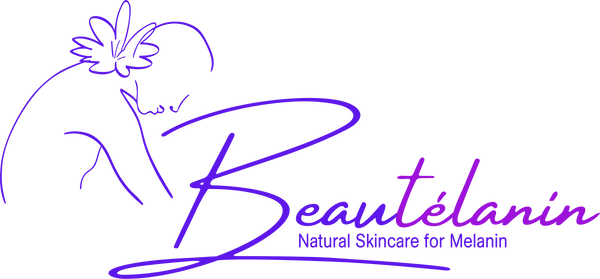Collage is the most common protein found in the body. It helps to maintain our body in one piece. The healthier your collagen levels are, the more youthful your skin appears.
Another protein found in the body is called Elastin. It is found in the arteries and lungs. Both of these proteins work together to give the skin its texture and shape. A skin with a healthy levels of both collagen and elastin is stronger and youthful
Citations
Binic, I., Lazarevic, V., Ljubenovic, M., Mojsa, J., & Sokolovic, D. (2013). Skin ageing: natural weapons and strategyies. Evidence-based complementary and alternative medicine. eCam, 2013, 827248. https://doi.org/10.1155/2013/827248
Two types of changes that occur in the skin:
- Chronological ageing
- This is caused by the passage of time
- Chronological ageing causes the appearance of xerosis, laxity, wrinkles and slackness
- The flattening of the dermal epidermal junction
- A decrease in the number of fibroblasts, which in turn reduces the number of collagen and elastin being produced
- Photoageing
- Refers to the changes to our skin resulting from our chronic exposure to the sun
- Ageing is accelerated in areas exposed to the sunlight (the ultraviolet radiation). This process is known as photoageing. It is a combination of short wavelength (UVB) injury to the outer layers of the skin (the epidermis) and the long wavelength (UVA) injury to the middle layer of the skin ( the dermis)
- Clinical presentation of photoageing includes dryness of the skin, irregular pigmentation, freckles, hyperpigmentation, wrinkling and ineslasticity
The body is constantly exposed to stressful environmental factors such as pollutants and UV radiation, causing oxidants that damage the biological skin cell membranes.
There are several plants that are reached in antioxidative. Flavonoids like rutin and phenolic ompounds like Hesperidin dervicates have antitumor, antiviral and antibacterial activities, and antiradical and atixidative activities.
The following extracts are known to have antioxidant activity
- Coffea Arabica fruit extract
- Has the following potent antioxidants: polyphenols, chlorogenci acid, and condensed proanthocyanidins, quinic acid, and ferulic acid
- This extract has been shown to improve fine lines, wrinkles, pigmentation, and overall appearance.
-
Mulberry (Morus alba) extract
- Exhibits super oxide scavenging activity that is involved in the protection against autooxidation
- Poplar bud (populus nigra) extract
- It has been shown to have beneficial effect on the skin as it ages. It has a strong antioxidant defense and inflammatory responses as well as cell renewal capability
- Polmegranate (punica grantum) extract
- Protects human immortalized HaCaT keratinocytes against UVB-induced oxidative stress ad markers of photoageing
- Ixora parviflora Extract
- Attenuates UVB-induced photo damage and inflammation by modulating the expression of MMPs, Mitogen-activated protein kinases
- Isoflavone extract (soybean)
- A good candidate for an anti-photo ageing agent in skincare
- Isoflavone extract prevents skin cell apoptosis, erytema and inflammation reactions
- Labisia pumila extract
- Shows the photo protective potential and could be used as an agent against extrinsic ageing
- Labisia Pumila could also upregulate the synthesis of collage in the human dermal fibroblast cells
- The herbal extract also has the ability to protect the human skin from ROS attacks generated by critical UVA exposure. This is due to the presence of bioflavonois and phenolic acids in the plant extract
- Articum lappa fruit extract
- It has anti-inflammatory effects and has ability to stimulate connective issue metabolism such as collagen and hyaluronan synthesis which helps regenerate the dermal structure
- This extract offers an effective skin care regimen for mature skin
- Matric metabolism is stimulated and wrinkles are visibly reduced
- Arctiin counteracts the chronic inflammatory in the ageing skin offering the first cosmetic treatment option that targets these sublinical process in the ageing skin
- Panax ginseng root extract
- Can induce the synthesis type I collagen
- Cinnamon extract
- Has effect on the human dermal fibroblasts
- It significantly promotes type I collagen biosynthesis within the dermal fibroblasts
- Cinnmaldehyde is the major active component in the cinnamon extract that induces type I collage biosynthesis
- Amla extract (emblica officinalis)
- Elevates the mitochondrial activity of human skin fibroblasts and promotes production of procollagen
- Studies suggest that Amla extract has a number of potential mitigative, therapeutic, and cosmetic applications
- Basil, oregano, Thymes essential oils
- Illicium anxisatum essential oil
- Has good antioxidant, anti-elastase, and anti-inflammatory effects and low cytotoxicity in the human cell lines
- Green tea (Camellia sinensis)
- Protects against inflammation and chemical-and-UV-induced carcinogenesis. UV-induced immunosuppression is prevented by green tea.
-
Silymarin
- A flavonoid complex isolated from the seeds of milk thirstle (silybum marianum) has been demonstrated to possess anti inflammatory, antioxidative, and anticarcinogenic properties
-
The root of astragalus (radix astragali)
- A Chinese herb
- It stimulates the hyaluronic acid productive in cultured human epidermal keratinocytes and human dermal fibroblasts
- Camellia japonica oil
- Can induce the synthesis of type I collagen
- Has high moisturizing effect and it is stage to use
- It also has probable ant wrinkle agent for management of the skin ageing.
- Elasticity and tightening
- Ethanol extracts of glycyrriza glabra
- Curcuma longa (roots), seeds of psorolea corylifolia
- Cassia tora
- Areca catechy, punica granatum fruits of embelica officinale, leaves of centella asitica, dried bak of cinnamon zeylanicum and fresh gel of aloe vera Have shown improvement in viscoelastic and hydration properties of the skin.
- These beneficial effects might be due to the synergistic antioxidant, anti-inflammatory and UV protective properties of the herbal ingredients

